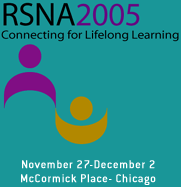
Abstract Archives of the RSNA, 2005
Robert Alan Koenigsberg DO, Presenter: Nothing to Disclose
Barbara Hum MD, Abstract Co-Author: Nothing to Disclose
Scott Clinton Feitell, Abstract Co-Author: Nothing to Disclose
Shounuck Ishver Patel, Abstract Co-Author: Nothing to Disclose
Nakul Vakil, Abstract Co-Author: Nothing to Disclose
Tom Hong, Abstract Co-Author: Nothing to Disclose
Kiran Batra MD, Abstract Co-Author: Nothing to Disclose
et al, Abstract Co-Author: Nothing to Disclose
The superior hypophyseal aneurysm is an uncommon entity accounting for 1% of intracranial aneurysms. Superior hypophyseal aneurysms arise from the segment of the internal carotid artery giving rise to perforating vessels supplying the hypophysis and optic chiasm. We present our experience with the endovascular treatment of superior hypophyseal artery aneurysms and review pertinent radiological anatomy.
We review five patients that presented for endovascular treatment of hypohyseal region aneurysms. Four were true superior hypophyseal artery aneurysms, with three illustrating the paraclinoid variant and one patient with the suprasellar variant. The former cases presented with headache and syncope, and one patient with the suprasellar variant presented with subarachnoid hemorrhage from a ruptured bilobed aneurysm. In addition, we review a unique case of a giant cavernous aneurysm causing pituitary apoplexy in a patient previously diagnosed with pituitary adenoma. Embolization with detachable coils was performed electively on three aneurysms, emergently for subarachnoid hemorrhage in one patient, and emergently for the ruptured giant aneurysm discovered intraoperatively during attempted trasnphenoidal resection of the “pituitary adenoma”.
Complete occlusion was obtained in the 3 aneurysms and in the inferior lobe of the bilobed aneurysm with a 2mm residual neck in the superior lobe. Occlusion was achieved with a residual unilateral neck in the cavernous aneurysm at 6 month post-procedure; this was followed by re-growth requiring re-packing and parent artery occlusion. Transient complications included one case of post-procedure blurry vision ipsilateral to the coiled aneurysm. All patients demonstrated improvement of presenting symptoms.
Our experience demonstrates that endovascular treatment can be used to effectively manage superior hypophyseal aneurysms and their related symptomatology. Appropriate imaging anatomy is reviewed.
Koenigsberg, R,
Hum, B,
Feitell, S,
Patel, S,
Vakil, N,
Hong, T,
Batra, K,
et al, ,
Superior Hypophyseal Aneurysms: Anatomy and Endovascular Management. Radiological Society of North America 2005 Scientific Assembly and Annual Meeting, November 27 - December 2, 2005 ,Chicago IL.
http://archive.rsna.org/2005/4410160.html

